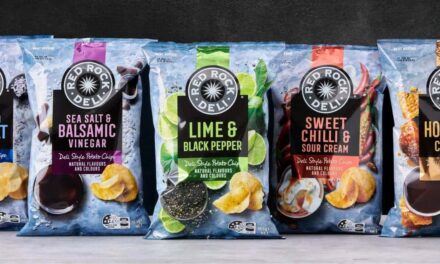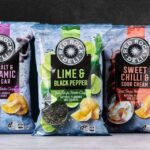Globally, food and meat retailing is undergoing a major shift driven by changing consumer needs and expectations. According to many studies, more than 90 per cent of the meat is sold through the wet market in the raw fresh segment. This growing market is completely untapped, giving a huge market opportunity for e-commerce and online meat retailing start-ups.
Table of Contents
Drivers of Rising Meat and Meat Product Consumption
In India, the protein requirement from animal sources remains low, currently at 18%. This figure highlights a significant gap in nutritional needs that the country aims to address amidst changing consumption patterns. By 2025, the demand for meat products is projected to grow substantially, with estimates suggesting an increase of around 80% from previous years. Explore recent trends in meat consumption.
The major driving forces for this demand for meat products are: increasing disposable income, preference for protein foods, health consciousness of consumers, fast-expanding retail shops and company-owned outlets. Lack of time, fast-paced urban lifestyle, convenience and growth in the quick-service restaurant (QSR) sector are at the heart of the adoption of processed meat and poultry products. Nowadays, consumers are looking for easy-to-prepare meals, fuelling the demand for semi-processed, ready-to-cook, heat-and-serve and ready-to-eat meat and meat products. Discover insights into processed food trends.
A young demographic, with higher income, is looking for meal solutions without compromising on health aspects. To meet this demand from the urban and semi-urban population, the concept of meat retailing came into practice. In India, the organised retail sector is growing at a CAGR of 15 per cent, and food retailing is the major portion of this retail trade. Retailers say that the future of the meat category is promising, and it will continue to grow at a healthy rate. People are very influenced by the trends in the West, and the same practices are seen and being replicated here. The rising income and spending power of the middle class are playing a great role in creating demand for this category.
Trends in meat retailing and marketing
Globally, food and meat retailing is undergoing a major shift driven by changing consumer needs and expectations, socio-economic development, and technological advancements. Progressive food business houses are continuously transforming business models and trying new ways to attract and retain consumers. In India, food retailing is in focus since new retail chains are giving competition to small stores, as these do not sell meat. According to many studies, more than 90 percent of the meat is sold through the wet market in the raw fresh segment. Understand how global trends impact Indian food retailing.
These traditional meat shops are usually small outlets, with a platform on the side opposite to the entrance, where meat is cut on wooden logs, and fine-tuning of pieces is done by using a knife. Unlike meat shops in developed countries or a few outlets from organised retail chains, the majority of consumers buy meat from a freshly slaughtered animal, from a carcass displayed in front of the customer, so that they can see and believe what they buy. The reason that Indian consumers prefer to buy fresh meat from open/wet markets is that a perception exists among a majority of meat buyers that fresh meat or a meat cut in their presence is of better quality.
Consumers have more confidence in the quality of fresh meat that is slaughtered by butchers in shops. The preference for fresh meat also extends to the belief that it is superior in taste and texture. From a hygienic point of view, and even much more from an aesthetic point, a traditional Indian meat shop can be regarded as a no-go area. This gives meat retailing a huge opportunity for selling branded products through organised retail channels. Over 65 per cent of the population in India is below the age of 35 years, and a majority of them are now exposed to the global media and malls, which is causing the demand for food hygiene to grow by leaps and bounds. Learn how food safety is maintained in meat retailing.
There is a huge opportunity for branded players and for the organised retail to grow and expand the market because people have until now preferred fresh meat. But now people are becoming aware of the hygiene and quality of fresh and semi-processed meats, and this segment is picking up and witnessing huge demand, and hence, there is plenty of scope to expand the business of meat retail marketing. This category of meat is growing at an excellent rate and has a promising future.
The market for this category is expected to triple by 2020 (India Food Report 2016). The fresh meat category has also attracted some branded players. Still, they are more focused on specific regions and are available within only limited geography due to the short shelf life of products. Even when refrigeration is available, consumers lack confidence in chilled or frozen meat because of the unreliability of electrical power.
Due to the large-scale preference for fresh meat, the market size of processed and frozen meat is very small. In recent years, the demand for frozen or chilled meat products from hotels, fast food restaurant chains, and urban consumers is on an upward spiral in India. Major institutional buyers prefer the meat from retail shops. These shops are further gaining more acceptance in the urban population. More and more hotels and caterers are using meat from major retailers for a banqueting point of view.
From a retail standpoint, there is an increased willingness of consumers to try chilled and frozen products and they are accepting it as a healthy and quick option. It is expected that with rapid urbanization across the country, wet meat markets will shrink and sale of fresh meat get restricted. With supermarkets and shopping malls spreading to even Tier II and III towns, it is expected that there will be greater support for the growth in the retailing of chilled/ frozen meat products. In recent years, new players have been emerging regularly, indicating opportunities in this meat retail sector.
Retailing of meat and meat products provides business opportunities in modern retail trade, superstores and self-service stores selling non-veg products. The meat category has distinctively marked a space of its own in the retail world. More and more stores are adding this category to their product line. Margins in this category are way more than the traditional branded products, and that is one big factor that invites people to add this line to the store. In general, retailers often get a decent margin on this category. So, most retailers are very keen on increasing their range and allocating more shelf space to the meat category, which is witnessing an increasing demand from consumers. Many supermarkets are seeing increased footfall in retail meat segments.
The major business in meat products is from the hyper and super formats. At the same time, frozen and chilled, packaged meat ranges are also gaining traction in small retail stores. Apart from offering a wide and varied assortment, there is also a much higher level of convenience that modern trade retailers have to provide vis-à-vis the open/ wet market. The convenience of shopping in a hygienic and comfortable environment, availability of a broader range under one roof, assurance of correct weight and quality, proper pricing, cutting, and cleaning are the key differences over the wet market, which encourage shoppers to buy meat products from organised retailers. The enhanced business is primarily due to the stores offering a superior level of convenience over the wet market.
Major retail houses having meat category:
- Godrej Nature’s Basket (GNB)
- Big Basket
- Hypercity
- Star Bazar
- Spar
- Spencer’s
- Food Hall
- Dorabji
- Haiko
- Big Bazar
Challenges and opportunities in meat retailing
Despite the anticipated growth in demand, challenges such as food inflation are impacting consumption patterns. For instance, beef consumption in India is expected to remain flat at approximately 2.99 million metric tons (MMT) in 2025 due to rising food prices affecting overall meat consumption. Moreover, while the protein consumption in India is projected to reach 38 million tonnes in near future, reflecting a significant increase from 30 million tonnes in 2018, the market dynamics continue to evolve.
Meat and non-vegetarian products are highly perishable and need strict hygienic and sanitary conditions for storage. The temperature control is critical in maintaining the freshness and quality of meat sold in retail shops. These are the major reasons for small, traditional grocers not selling meat and related foods. Generally, non-veg retailing is not an easy business as it is challenging to manage the inventory and supply chain. Meat selling and retailing require an end-to-end strong cold chain, sufficient storage space, merchandising/ display of products, and skilled, knowledgeable manpower to handle these ultra-fresh products. Explore strategies for maintaining quality.
It is also important to get region-wise/ store-wise best vendors who follow all GMP/GHP/food safety standards while handling these products. Launching a meat section at traditional grocery stores is not an easy business, and such products can be made available only if traditional grocers have full-fledged cold storage or a tie-up with a vendor who has such capabilities. Nowadays, customers are shifting from buying non-veg from unorganised/open market outlets to modern retail stores where products are handled in a much hygienic way, stored at the right temperature, the staff give you the correct product information, and they come with the experience of buying and prompt customer service. Hence, assortment must be planned as per the requirement of the customers in the catchments.
On the product front, taste and quality are the most profound factors coupled with the availability and visibility of the product to the consumers, which will drive the category performance. Retailers should strive to achieve this with the variety, freshness, availability, and visibility of their products across all leading stores. Further, there has to be continuous improvement and innovation in the products’ bandwidth in order to keep up with the market trends and growing demand, as everybody wants something different, something new type of product. Quality, variety, and specifications based on consumer needs will be the growth drivers of meat retailing.
Building brand awareness about the product, nutritional balance and health awareness, hygiene and quality will be key parameters in shaping the category’s performance. As disposable income goes up, young urban consumers will look for convenient cooking options. Therefore, convenience-led innovation in terms of product format and packaging offers the growth potential. Highlighting sourcing information, free-from products will enhance appeal among consumers looking for healthy and safe product options. Targeting specific demographics can also hold appeal. Innovations in packaging also provide information about the quality and shelf life of meat. Organised retailing helps to implement traceability in the meat value chain and assures consumer safety.
Due to globalisation and trade requirements, dumping of meat and meat products at lower prices from developed countries is also a threat to domestic producers. Expanding the retailing to rural areas and making these convenience value-added meat products available in all places is another challenge which must be addressed.
Online retail and e-commerce in meat enterprise
New research from a market intelligence firm says that India is currently the second fastest-growing meat market globally, with a CAGR of 22%. The need for convenience is the key driver behind India’s growing meat and poultry retail markets. The fresh meat industry with the current size in India (around Rs 180,000 crores) is highly fragmented, and the unorganised market (butcher shops) comprises 90 per cent of the total sector. Find insights into the online meat market.
The demand for fresh meat and the lack of quality options in the traditional ‘seller-centric market’ largely drive the online meat-selling market in India. The online meat market is developing because of increased awareness of protein intake, preference for fresh meat and the lack of hygiene in traditional meat markets. This business model has better supply chain management and technological intervention than offline options. This growing market is completely untapped, giving a huge market opportunity for e-commerce and online start-ups. The digitisation of the market can also improve the value chain operation of the meat industry.
The online market helps in bringing a quality product at a standardised pricing for mass-market consumption. The online market can be targeted at both B2C and B2B customers. With consumers increasingly waking up to e-commerce, the online version of the meat industry will certainly crack the business model. The current demand-supply gap in the meat industry is largely attributed to the capital involved in maintaining the cold chain. Huge capital is required for cold chain technology, the processing, and preservation of meat, which results in sellers spiking up the price of the meat.
The rise of frozen and processed meats initiated by modern retail supermarkets was primarily to gain consumers by using ‘hygiene’ as the USP. This is being taken advantage by growing start-ups in the online meat market. The lack of a holistic approach to standardise and regularise the system is a major challenge for these start-ups. A comprehensive approach to maintaining the entire supply chain, right from the breeding of birds/animals to last-mile delivery is essential in running a successful online meat sale. Start-ups are developing a tie-up with cold chain logistics firm and keeping a close eye on suppliers. These start-ups have to set up plants, liaises with government bodies for tax exemptions, and consults on equipment, feeding and develop a socio-economic understanding of the meat industry to succeed in this business.
Major online meat retailing start-ups are:
- Licious
- Fresh to Home
- EasyMeat
- ZappFresh
- Meatigo
- Fleshkart
- Giggsmeat
- Lionfresh
- MeatRoot
- Good To Go
- The Meatman
- Fipola
However, the majority of these start-ups source their raw material from municipal slaughterhouses, which operate under unhygienic conditions. Just repacking and selling under chilling/frozen conditions, will not assure the quality or safety of meat and meat products, and thereby, consumers may not continue to buy these products in the long run. Hence, these start-ups must consider establishing their own primary processing plant or further processing to ensure hygienic and quality meat production and supply.
Future prospects for meat retailing
Offline and online convergence of buying and selling is rapidly changing the food market landscape. Purchasing food articles online is catching up very fast in urban India. The “convenience” of online shopping and grocery delivery means saving in time and transportation costs. Online is poised to become a bigger part of the overall food retailing. Marketing through social media is catching the trend in India. Mobile and digital influencers like Facebook fan pages, blogs, customer-generated reviews, and friend recommendations are playing a bigger role in shopping decisions.
Consequently, traditional marketing channels – pushing messages through TV, radio, and print – will continue to give way to social media marketing. Social media engagement allows brands and retailers to be where their customers are. Engaging advertisements around a brand get the attention of customers’ minds and develop brand advocates in the general public. Learn how online retail is reshaping food markets.
Transparency in dealing with online consumers with respect to health, food safety, or environmental responsibility, consumer demand for information about the products they use and the consumer continues to be at the centre of conversations throughout the industry. The meat industry is making an effort to be a transparent industry through product certifications, health claims, and icons on food packaging.
In the coming year, more food manufacturers and retailers are likely to embrace new tools, including mobile applications and available transparency tools, to ensure their brands are accurately represented. Additionally, utilising technologies like big data analysis to mine loyalty programs will allow retailers to quickly identify product purchases and alert shoppers of food safety issues or product recalls. Grocery retailers should find ways to deepen emotional connections with shoppers. Experiences to engage consumers and encourage them to shop longer, spend more and stay loyal are needed.

FAQs: Online Meat Retailing and Trends in India
What is the current protein requirement from animal sources in India?
The protein requirement from animal sources in India is currently at 18%, indicating a significant gap in meeting nutritional needs. By 2025, the demand for meat products is expected to increase by approximately 80%.
What factors are driving the demand for meat products in India?
Key factors include increasing disposable income, preference for protein-rich foods, health consciousness, a fast-paced urban lifestyle, and the growth of quick-service restaurants (QSRs). Convenience and the demand for ready-to-eat or semi-processed meat products also contribute significantly.
Why do Indian consumers prefer fresh meat from open markets?
Many Indian consumers believe that fresh meat cut in their presence is superior in taste and quality. Additionally, there is greater confidence in meat slaughtered by local butchers compared to pre-packaged or frozen alternatives.
What challenges does the meat retail industry face?
Key challenges include maintaining hygienic and sanitary conditions for perishable products, ensuring temperature control, managing inventory, and establishing a robust cold chain. Traditional grocers often lack the infrastructure to meet these requirements.
How is the online meat retailing market growing in India?
India is the second fastest-growing meat market globally, with a CAGR of 22%. The online segment is expanding due to the demand for convenience, hygiene, and quality, offering better supply chain management and technological solutions than traditional markets.
What is the role of organized retail in the meat industry?
Organized retail brings improved hygiene, quality assurance, and customer service to meat retailing. It offers a more comfortable shopping experience with proper storage conditions, variety, and value-added options.
What are the future prospects for meat retailing in India?
With increasing urbanization, the convergence of offline and online retailing is transforming the food market landscape. Online grocery delivery and transparency in sourcing are expected to drive growth, while innovations in packaging and product variety will cater to evolving consumer needs.
How is technology contributing to meat retailing?
Technology, including big data analytics and supply chain management, enhances efficiency in retailing. It helps maintain traceability, ensures safety standards, and improves customer engagement through online platforms and mobile applications.
Have a news or topic to share with industry? Write to us editorial@pfionline.com
















